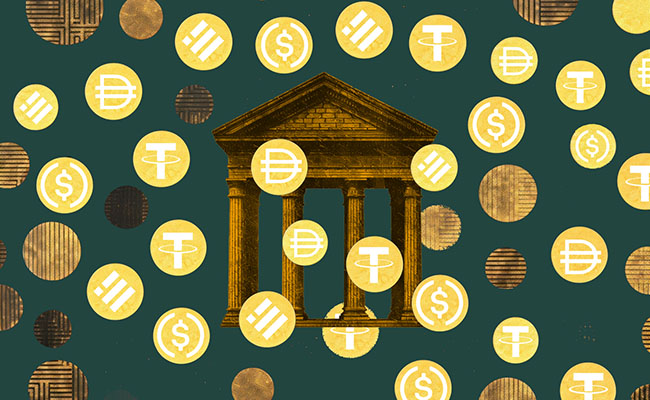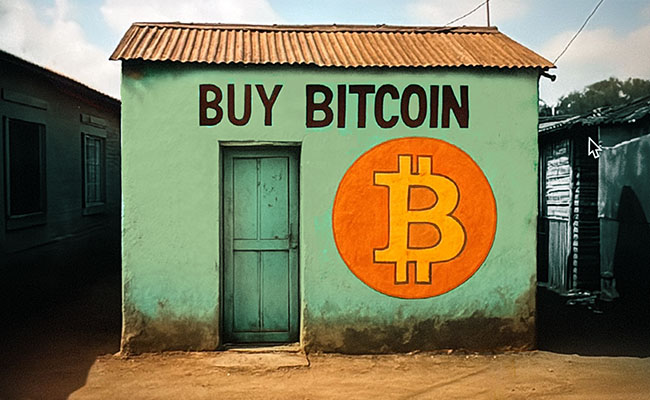Slowly, slowly, then suddenly, as the saying goes. The banking industry, at least on the surface, has surrendered en masse to its previous ankle-biting nemesis: crypto.
Stablecoins are now on every banker’s agenda. New stablecoin announcements and launches are everywhere – from brash investment banks to staid old high street legends to broad-based financial service providers to payment processors.
To highlight just a few around the world, many of them having announced plans in the past few weeks: Bank of America, Citigroup, JPMorgan Chase, Wells Fargo, Fifth Third Bank, US Bancorp, Fiserv, FIS (Fidelity Information Services), Société Générale, PayPal, Visa, ANZ Bank, Standard Chartered, MUFG, SMBC, Mizuho, Bancolombia and Banking Circle.
Everyone else will have to follow, because that’s where the big wind is blowing, and it is not going to abate.
There are two stories here. The first is how this happened and what it portends. The second is that this is not a story about cryptocurrency at all – and therein lie the devil’s details.
Most major economies had been plodding their way to some sort of slapdash crypto regulatory framework over the past five or so years. It was not a priority for anyone; crypto in all its guises was an annoyance in the great halls of power.
Regulatory urgency was in short supply, aside from some testbeds like the canton of Zug in Switzerland, El Salvador and Dubai. Even where there was regulation, most of what was being done was forcing the round peg of crypto into the square holes of traditional financial oversight.
Two things happened to change that. The first was the long-awaited launch of bitcoin ETFs, led by investment giant BlackRock. When BlackRock talks, everyone listens, and so a thumbs-up from it gave naysayers pause.
But far more important than that was Trump 2.0. Having turned from sceptic to enthusiastic crypto booster (and perhaps more cynically, a savvy crypto-enthusiastic vote collector), he arrived in the White House. He immediately appointed a set of true crypto believers into influential positions across his fiefdom.
One can hypothesise all sorts of dark deceits and conspiracies pertaining to Trump and his family’s embrace of the crypto system (from which they have now reaped billions), but that is not as important as its secondary effects: that of firm legitimisation and presidential support of an industry that had previously faced mostly derision and insult.
Unsurprisingly, regulators on Capitol Hill stepped into high gear, even across party lines. The Genius Act was signed into law on July 18 2025. It is the first federal legislation in the US that regulates explicitly payment stablecoins – digital tokens pegged to a stable value to be used for payments or settlement.
Digital gold rush
This cleared the decks of uncertainty, and the blockchain-based digital dollar gold rush is now under way. The Citi Institute projects that the stablecoin industry will grow from $250bn today to $1.6-trillion as traditional financial institutions worldwide climb aboard the bus. Others project that all regulated money will be carried by stablecoins by 2035.
This bears repeating: all money globally will be borne by blockchain-based tokens, to be traded, custodied or transferred via mobile phones instantaneously and safely, including across borders, acting as the rails of all commercial, institutional, governmental and individual payments globally.
To be fair, many bankers saw this coming years ago. But banks are nothing if not regulation’s whore – their submission to compliance is their bread and butter, so the Genius Act (and others, like MiCA in Europe) have cleared the runway, especially with respect to the legal protection that it affords to both banks and consumers.
Enormous fortunes will be made in this migration, and laggards will get wiped out. Regulated stablecoins are a better mousetrap than the money we all have grown up with on just about every metric you care to measure – speed, cost, process simplification, middlemen leakage, security, divisibility, auditability, portability, fraud resistance. The phrase “better mousetrap” is an understatement.
Which leads me to the second, perhaps more interesting, point. Contrary to popular perception, regulated stablecoins are not really cryptocurrencies, at least in the traditional definition of the word accepted by most of the pioneers who built the industry.
To understand why, we have to talk about anonymity and consensus, two core philosophical pillars embedded in the original crypto ethos. First, the Genius Act requires KYC (know your customer). Anyone who uses a regulated bank-issued stablecoin will have to reveal who they are, just like in any other banking transaction. This is not true in the rest of crypto (including in the unregulated stablecoin projects like DAI), where anonymity is embedded.
Second, traditional cryptocurrencies ensure that ledgers are immutable via cryptographic magic (which exists in regulated stablecoins too). But the second method that is used is “consensus”, where many anonymous parties all verify the same ledger (up to many hundreds of thousands in the case of the major cryptocurrencies like bitcoin). This ensures the integrity of the system – no-one can change the ledger unless they capture more than 50% of the anonymous verifiers, which is too expensive to contemplate.
This core protection will not exist in regulated cryptocurrencies, like those currently being announced. The blockchains are “permissioned” – corporations control them and they can be monitored, edited, changed, rolled back or deleted at the discretion of a small group of people.
This is horrifying to anyone who has bought into crypto’s foundational principles because of these core tenets of immutability and ledger integrity.
What does this portend? It means that there will still be two separate and parallel financial systems: one anonymous and secure and outside of governmental reach, and one that is part of the establishment – basically the same as the old system we all know (and sometimes hate), only faster, cheaper and more flexible than before.
So, the banks did not really surrender to cryptocurrencies. They just copied some of the clever crypto plumbing invented by the original crypto creators, because it makes their traditional job easier.
I doubt whether they even said thank you.
Steven Boykey Sidley is a professor of practice at the Johannesburg Business School and a partner at Bridge Capital.
Top image: Rawpixel/Currency collage.
Sign up to Currency’s weekly newsletters to receive your own bulletin of weekday news and weekend treats. Register here.














